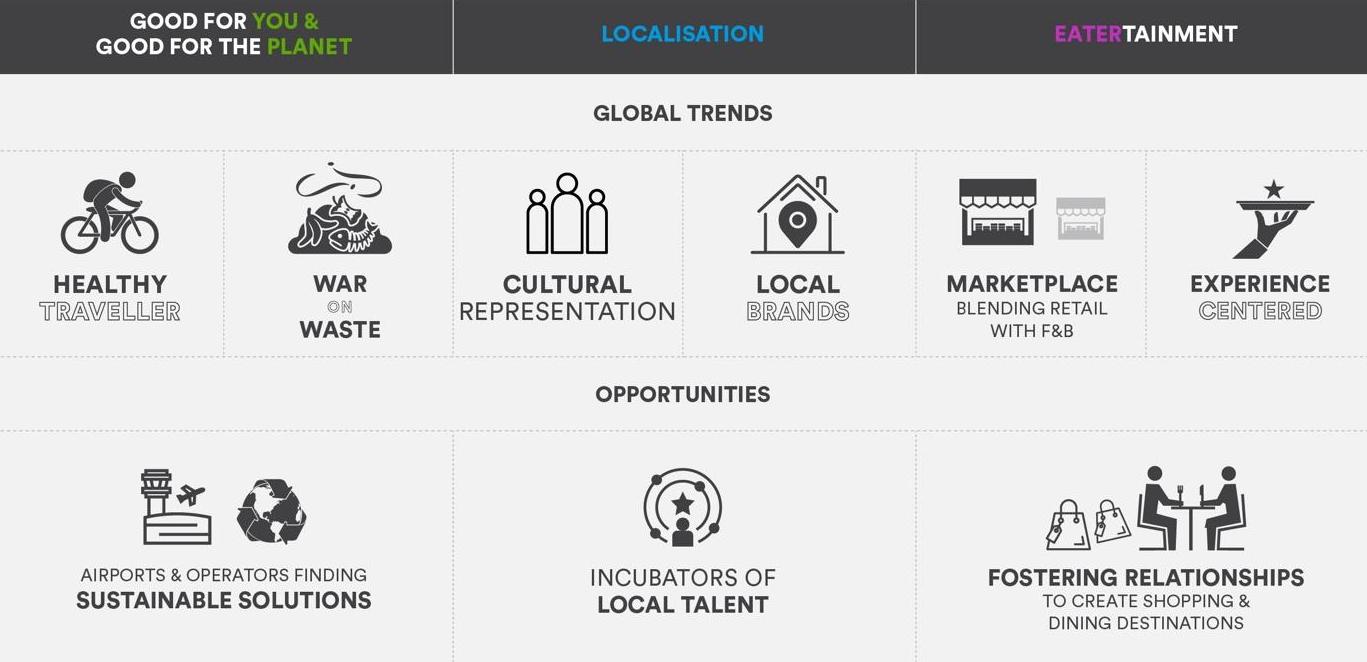
Analysis: Three global F&B trends for 2020
INTRODUCTION. The Moodie Davitt Report, through the Airport Food & Beverage (FAB) Conference & Awards and the FAB eZine, has been witness to a profound transformation in airport dining over the past decade. Our goal, as the only dedicated food & beverage (F&B) publication in the travel retail industry, is to chronicle, champion and accelerate that qualitative evolution.
To help promote that agenda, Kevin Zajax, CEO at new food & beverage advisory company Ground Control* (pictured right), commences a series of thought-provoking Op-Ed articles on trends, challenges and opportunities for the F&B sector. These will appear online and in each issue of the FAB eZine.
The world of airport F&B continues to develop rapidly and while, as Kevin (Chief Operating Officer at Emirates Leisure Retail in Dubai for 11 years until May 2019) mentions in his first article, the sector has ‘the luxury of necessity’ (people have to eat and drink), complacency is not an option.
A quick search online, attendance at an industry forum, or even light conversation at a dinner party will highlight a plethora of trends in the food & beverage (F&B) industry for 2020.
These trends range from the simple extension of online ordering and home delivery to the rise of non-alcoholic beverages, right through to gastro-physics and the resurgence of the humble jackfruit.
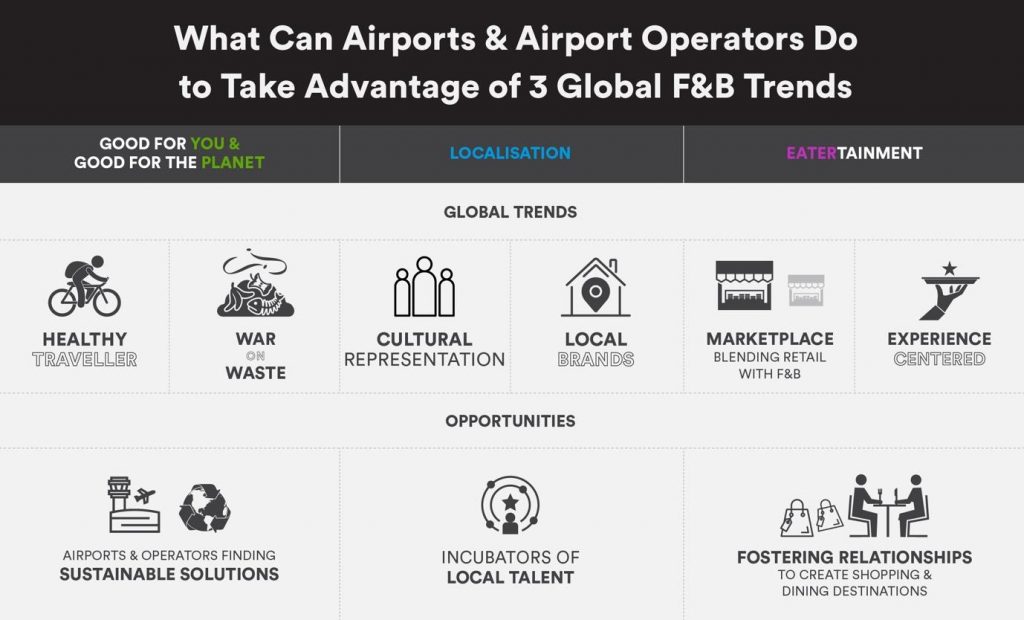
While the primary function of people visiting airports is rarely to shop or dine, because airports are in essence a microcosm of the global retail market, the same trends apply. We select three that will have a major impact in changing the shape of F&B in airports in 2020:
- Food that is good for you, driven by an environmental focus
- A localised approach to dining, serving as a cultural representation
- Partnerships and new innovations that blur the lines between F&B and traditional retail to appeal to the experience-centred millennials.
Good for you, good for the planet
Renowned wellness architect and author of 21 Days to Resilience Dr Zelena Montminy is spot-on when she says travelling doesn’t have to compromise healthy eating habits. People are more aware of their wellbeing than ever before, seeking foods that will make them look and feel good.
While we are not advocating the obliteration of quick service restaurants or indulgent cafés, the surge in plant-based eating, the imposition of sugar taxes, and consumer preferences mean airports and airport operators need to adjust their outlet and menu mixes to balance the scale to global trends and eating habits.
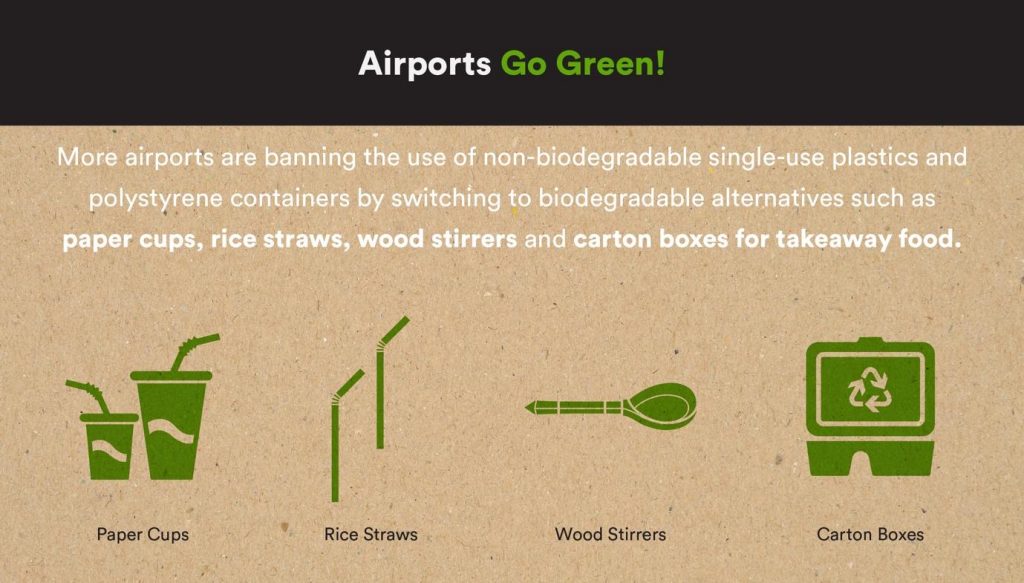
While healthy eating is hardly a new concept, 2020 extends this focus beyond what is physically consumed, into (arguably) a more challenging and emotive element of doing business.
Airports and airport operators have long cited ‘operating challenges’ as reasons why ‘things can’t be done’: added challenges around security, 24-hour operations and a disconnect from local council infrastructure. But as progress on climate change, the elimination of single-use plastics and the war on waste dominate headlines, consumers are increasingly demanding sustainable solutions for the product and the entire value chain pre- and post-consumption.
“There are usually three responses when we ask whether they have considered taking their brands or concepts to an airport. These are: ‘Are you mad? Have you seen the rents they want?’; ‘I don’t understand airports at all’; or ‘I’d love to, but I don’t meet the criteria in their tenders’.” – Kevin Zajax
Fortunately, some airports have taken the lead in these important initiatives. Airports Authority of India recently declared 20 more airports to be single-use plastic-free in addition to the 35 airports that have already joined the movement. DXB (Dubai International), the busiest international airport in the world, committed to the removal of plastic cutlery, drinking straws, takeaway food packaging and polythene bags from cafés, restaurants and shops by the start of this year.
Hartsfield Jackson Atlanta International Airport, the busiest for total passenger traffic in the world, has set its sights on zero-waste operations by partnering with food waste management company GoodR, which takes care of all the logistical matters of reclaiming leftover food. Restaurants in the programme can use the company’s app to indicate food items that would go to waste if not repurposed, which is then collected and redistributed by the GoodR team.

It seems as though everyone is winning from this brilliant initiative and airports of all sizes can take note of Atlanta’s results – social, economic and environmental. By August 2019, the programme had fed more than 200,000 veterans, seniors and children in Atlanta; landfill was decreased by about 215,000 pounds; emissions were reduced by about 190,000 pounds and over US$1 million was generated in tax savings.
Where environmental factors are concerned, given the scale and prominence of airport businesses, massive differences can be made when airports and operators work together to find and deliver sustainable outcomes.
Localisation
In just about every tender we’ve seen in the last decade, the phrases ‘Sense of Place’, ‘cultural representation’ or ‘reflect local offers’ were present front and centre. In many respects, airports and airport operators have come a long way.
Partnerships with celebrity chefs and mixologists are picking up in airport F&B globally. In 2019, Vancouver International Airport announced the results of its tender and promised a distinct British Columbian character to its updated hospitality mix. Headlined by internationally-renowned Canadian chef David Hawksworth, the F&B offer includes meat sourced from regional producers as well as fresh local and regionally sourced seafood on top of the promotion of Vancouver’s burgeoning artisanal craft beer scene.

Melbourne Airport is also midway through a transformation of its F&B offer. Leading chefs such as Scott Pickett and Shane Delia will open venues alongside independent breweries and coffee roasters who are entering the airport for the first time.
Chef Pickett himself says the airport showcases what the city is about. “For Melbourne to continue to be a global city, the airport needs to remain current and at the edge of global trends and standards,” he says.
If airports truly want to be innovative, to reflect trends and to reflect what the city has to offer, there is no sense shutting out valuable operators at the beginning of the process
So what more can airports and operators do to build upon these successes?
Having spoken to many large and small operators outside the airport industry, there are usually three responses when we ask whether they have considered taking their brands or concepts to an airport. These are: ‘Are you mad? Have you seen the rents they want?’; ‘I don’t understand airports at all’; or ‘I’d love to, but I don’t meet the criteria in their tenders’. These responses illustrate the challenge, but also the opportunity, this industry has.
For the first two responses, the solution is possibly as simple as better education on how the systems work and what the trade-off is between high rents and captive audiences. This would allow for more informed decisions or dialogue to take place.
The third response is one we believe airports need to take heed of. If airports truly want to be innovative, to reflect trends and to reflect what the city has to offer, there is no sense shutting out valuable operators at the beginning of the process.

Now, some of you will argue that this has already been solved – case in point with the above airports. Or in the US system, where the ACDBE [Airport Concessions Disadvantaged Business Enterprise] approach provides a framework to showcase local talent. But do these solutions reach far enough?
What prevents airport-borne concepts becoming cool or airport operators developing their own ‘rock stars’? What a great day when we hear someone say, ‘have you been to that restaurant in the airport? When will they bring this downtown so I can go with my friends?’
What is preventing airports from becoming incubators of local talent? Airports could designate certain areas, setting up infrastructure that enables talented chefs, mixologists and restaurateurs to ply their craft in this challenging yet wonderful and fruitful environment.
Airports could invest in installing kitchens that can be reused by similar operators, leaving the only necessary changes to be made to front-of-house aspects and branding to reflect the current offer.
Commercial terms could be concessionary or simply be based on sales levels so that if the concept is highly successful, both parties win. These could be rotated every six months or annually, and if the concept proves rewarding, the restaurateur is likely to pitch for a full-blown outlet in the airport.
In our opinion, airports and airport operators have been followers for too long. What prevents airport-borne concepts becoming cool or airport operators developing their own ‘rock stars’? What a great day when we hear someone say, ‘have you been to that restaurant in the airport? When will they bring this downtown so I can go with my friends?’
Eat-ertainment
Whatever you want to define the experiential dining movement as, we can all agree that only serving good food is simply not enough anymore. Millennials (who represent one-third of the world’s population, but are by far the biggest purchaser and consumers of food, eating out up to five times per week) are driving the experience-centred economy.
Retailers are grappling with this more and more – how do they move from functional transactions to experiential engagement? Fortunately, the F&B industry has a natural head start. Without trying, food is emotive; drinks are sensory. Dining is an experience in itself – a valuable advantage to other forms of retail that operators must capitalise on.
But, aside from a couple of truly international brands, F&B doesn’t carry the brand-led motivation that retailers have. While duty free retailers are jostling for the purchase transaction, brands such as Louis Vuitton, Johnnie Walker and Chanel know that brand awareness is equally important – after all, if someone wants that LV Neverfull bag, chances are they will buy it; it’s just a matter of when and where.
Should F&B operators be marketing themselves as ‘experience partners’ to big brands? Should airports be fostering those relationships to establish themselves as shopping and dining destinations? The answer is yes.
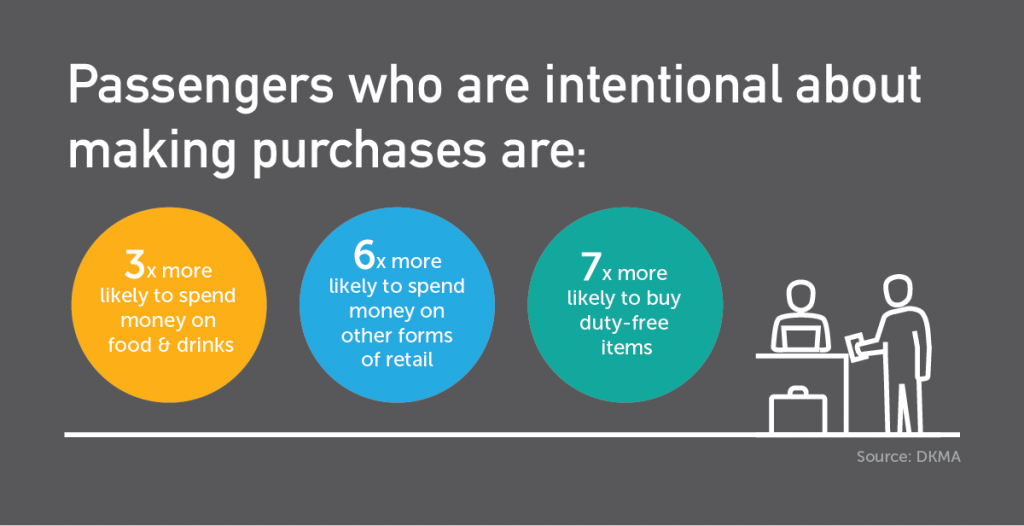
Satisfying someone’s appetite from an F&B perspective is much more immediate – if you don’t take advantage of their hunger now, you can’t get them twice when they next pass through.
So, should F&B operators be marketing themselves as ‘experience partners’ to big brands? Should airports be fostering those relationships to establish themselves as shopping and dining destinations? The answer is yes, and here’s why.
On the High Street, some 40% of consumers base their choice of shopping destination on the dining options available, according to market intelligence company ECE. In airports, research by Horizon Consumer Science shows that people with more positive perceptions of airport retail spend twice as much at airports compared to those who have negative perceptions. Advisory company DKMA builds on this and, citing a five-point scale, claims that each 0.1 point improvement in satisfaction leads to a US$0.80 increase in spend per enplaned passenger.
In the airport space, there are some examples where F&B extends into retail (or vice-versa) but they are few and far between.
The ‘Enrique Thomas Experience’ in Barcelona’s El Prat Airport offers a sample of traditional Iberian products and Spanish flavours alongside D.O. wines. The best ham is hand-cut by Serrano ham masters in front of customers, giving them the option to take tasty souvenirs with them.
In Orlando, award-winning US wine bar concept Vino Volo (pictured below) allows passengers to imbibe on wine flights and local blends as well as purchase retail bottles to take with them on their journey.
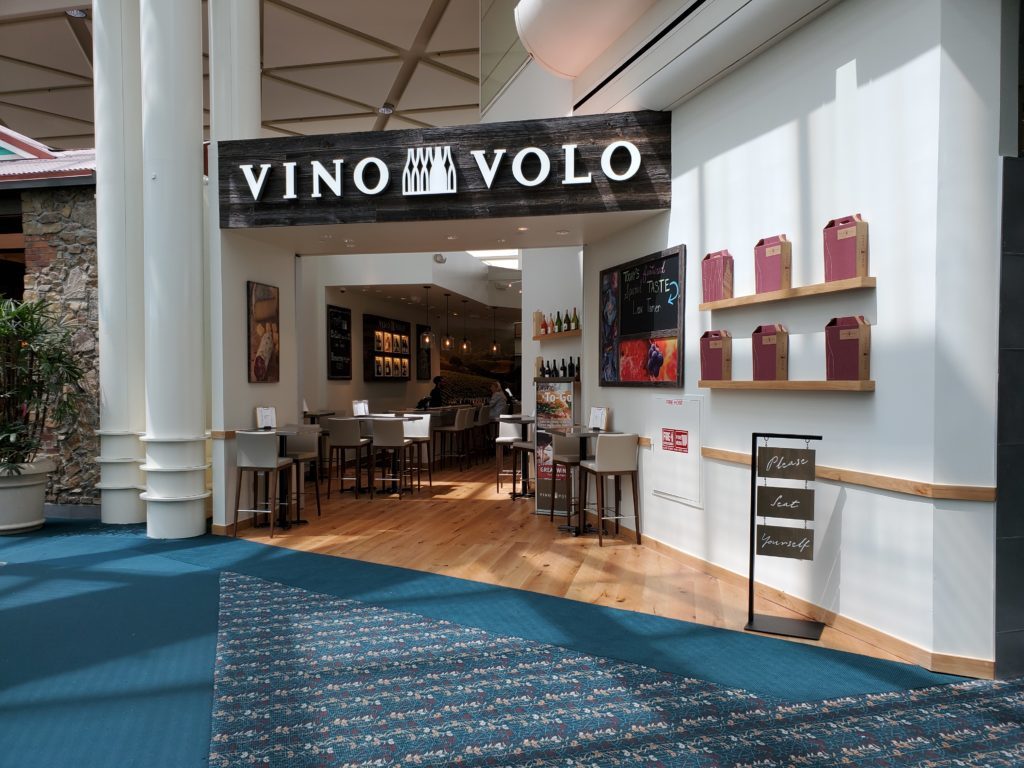
In Singapore’s Jewel Changi, Muji’s two-storey outlet store reserves the lower level for apparel and lifestyle products while the second floor is home to a café and casual eatery surrounded by home interior and kitchen product displays.
Emirates Leisure Retail recently announced partnerships with Australia’s most renowned winemaker, Penfolds, and renowned Australian cook, food author and restaurateur Maggie Beer, to launch at Adelaide Airport. Both outlets promise to blur the lines between traditional retail and F&B.
There would appear to be significant opportunity in this space to create those memorable experiences that truly engage with the consumer.
2020 and beyond
Airports are a microcosm of mainstream retail, including F&B. Key drivers for airport F&B in 2020 will undoubtedly revolve around good, sustainable food, a more localised approach to dining, and new innovative partnerships.
Together, these have the opportunity to really enhance the consumer experience, highlighting airports as retail destinations in their own right.
Airports, airport operators and brands have a choice. They can, as many have done for years, wait for trends to inevitably filter into the airport. Or, they can be drivers of change – not simply within their own airport or local community, not simply within travel retail, but among the global retail industry.

Recent Comments